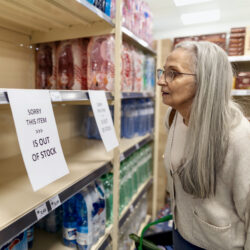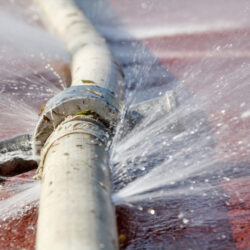Inventory leakage causes significant retail losses

As much as 2.1% of all inventory fails to make it onto store shelves intact. One major cause of this are the numerous errors made during the delivery, receipt, picking and loading of goods. The benefit of bringing in an external party to conduct independent spot checks became evident during Supply Chain Media’s webinar in partnership with Retail & Asset Solutions (RAS): “Many retailers like to blame suppliers, but that’s by no means always justified.”
By Marcel te Lindert
The recent festive period demonstrated once again just how crucial high availability is in stores. “Christmas is normally the time of year when consumers spend a lot of money on serving the best products. Although stores were once again busy last December, more consumers than ever chose white-label products over A-brand products. This is linked to the high inflation and the recession, of course, but also to product availability. The shortage of certain ingredients caused consumers to adjust their buying habits, which took many retailers by surprise,” said Faisal Ashfaq, Head of Supply Chain at Retail & Asset Solutions.
This underlines how important it is for retailers to have a watertight distribution process to prevent inventory leakage. But based on the five million spot checks RAS conducts each year in retailers’ UK distribution centres, this is still a distant dream. The biggest problems occur at goods receipt. “Many retailers like to blame suppliers, but that’s by no means always justified,” commented Ashfaq. “Often, the goods are delivered correctly but something goes wrong in the goods receipt process: red apples are logged as green apples, or apples are put away in the wrong storage location.”
A leaky supply chain
Needless to say, a flawed goods receipt process is not the only reason for poor availability of goods. As Ashfaq knows from experience, many mistakes are made during order picking, shipping and in-store handling too. “We think of the supply chain as a system of interconnected water pipes and tanks. That system is full of leaks that allow water to escape, whether because of errors in processes and systems or because of human actions. Plugging only one leak doesn’t help; that just makes the water escape from the other leaks even faster. You have to address the entire system.”
RAS provides services that help to improve the availability of goods. The organization sends auditors to distribution centres to verify that goods are delivered, received, collected and shipped correctly. These independent spot checks reveal not only the errors, but also their causes so that companies can take steps to improve the processes. “We work for 94% of retail formats in the UK and we’re now trying to expand this unique service to continental Europe,” Ashfaq said.
Good Faith Receiving
The added value of independent audits is evident in the discussions surrounding goods receipt. When retailers receive the incorrect quantity of goods, identifying and rectifying the error generates a lot of correspondence and administrative work. “That’s why we’ve set up a process that is fair to both suppliers and retailers, while providing greater efficiency. It is called Good Faith Receiving, and it has already been implemented by eight of the ten largest UK retailers for a total of 700 suppliers,” Ashfaq explained.
Under the principles of Good Faith Receiving, suppliers no longer have to wait for the retailer to verify the delivery. Instead, they can leave immediately after unloading the truck, which saves a considerable amount of time. The supplier sends an invoice for the delivery and the retailer pays it without question. In the meantime, the auditors from RAS do quarterly spot checks on, for example, 5% of the goods delivered. If the checks show that incorrect quantities of goods have been delivered, the difference is settled between the supplier and retailer at the end of each quarter. “In our experience, this sample is representative of the remaining 95%. And because the audits are conducted independently, both the supplier and the retailer are happy to accept the outcomes.”
Loading of roll containers
Good Faith Receiving allows for faster and more efficient goods receipt and reduces the administrative burden. And because suppliers and retailers work together in good faith, the relationship between them gets a positive boost. The result is better root cause conversations and fewer errors. RAS figures show that the number of errors drops by 60% within a year of implementing Good Faith Receiving, with the greatest decline in the fashion sector. “But that is also the sector with the highest error rate. It often involves clothing in different sizes and colours, so it’s easy to make mistakes,” Ashfaq stated.
RAS also provides independent spot checks on order picking or direct delivery to stores. The most underestimated processes are consolidating goods in the warehouse floor and loading the trucks. “If you make a mistake during order picking, it only affects one product. But if you make a mistake loading a roll cage, it can immediately involve 20, 50, 100 or 200 products. A major British retailer discovered that 3% of all pallets and cages were taken to the wrong store. That has a big impact on the stock in those stores,” Ashfaq continued. “We check not only that the right deliveries end up in the right stores, but also that they are unloaded at the right store.”
2.1% less availability
All in all, these errors mean that the total availability of goods is 2.1% lower than necessary. In other words, 2.1% of customers will leave empty-handed because the desired product is out of stock in the store, or they will choose an alternative product out of necessity, such as buying red apples instead of green ones as intended. Ashfaq: “These errors will often go unnoticed if you don’t perform regular checks. The benefits of such checks far outweigh their costs. Plus they bring you closer to the goal of having the right products in the right quantities, in the right location, at the right time.”








